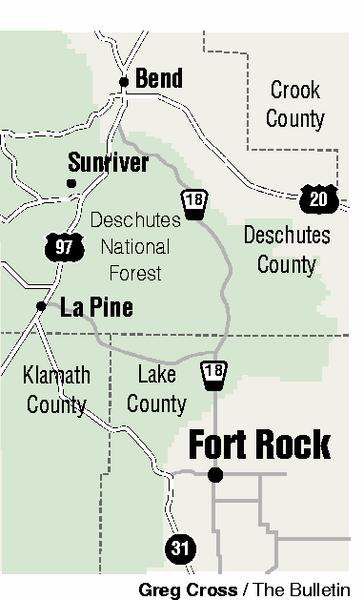Homestead history
Published 5:00 am Friday, October 27, 2006

- Homestead history
If you like your weeds tumbling, your coyotes yipping and your country cold, wind-whipped and lonesome, Fort Rock beckons.
It’s the kind of place that might elicit a hearty ho-hum or even a brief expression of horror from a high-rise-hardened urbanite. But the little agglomeration of small stick-built houses and manufactured homes huddled against the pancake-flat vastness of the desert is a beautiful thing.
It’s close to the bone, about as real as places get.
Stand in the desert on the outskirts of this village of 22 independent souls, or peer out the window from inside one of the cozy units in the Rock View senior apartments, or face west and gaze out over the sagebrush from the parking area at the Fort Rock Homestead Village, and you get Fort Rock, the geologic anomaly. The fortress-shaped tuff ring was hewn into a semi-circle by the erosive action of a huge lake that once dominated the landscape here. It rose as an island in the lake, and the prevailing southeast winds bored into the soft rock, forming the opening that now faces Fort Rock, the town.
It’s as much a part of life in the Fort Rock Valley as the mule deer and the jackrabbits.
But there’s more to this place for the casual visitor than the state park at the base of The Rock. There’s history, much of it written by the straight-backed homesteaders who put the valley on the map in the late 1800s and early 1900s.
According to the late Jean Flegel, whose grandparents were among the original inhabitants, when the government opened up 320-acre parcels of ”farm land” in and around the valley, there were lots of takers. The homesteaders found out later that the nonirrigated land was unsuitable for farming and marginal for grazing. Many failed. Their hardscrabble cabins turned to dust along with their dreams.
Some succeeded, though, during a period of high rainfall around 1912-13, and for a time, the bottom lands there were grassy green, and dairy herds grazed in the area, according to the late historian and Bulletin reporter Phil Brogan.
The village of Fort Rock was a much busier place back then, when homesteaders conducted their local business in the bustling little outpost. It’s estimated there were as many as 1,200 homestead families living in the area back then.
Those halcyon days live on at the Fort Rock Valley Homestead Village Museum on the town’s main drag. Founded by Flegel’s parents, the little patch of desert contains nine of the original homestead buildings. There’s Dr. Thom’s office, built in 1907, 16 miles to the south. There’s the Webster cabin, the Bodenheimer house and the Menkenmaier log cabin, along with the Beeletable house, Widmer cabin, Sunset School and the Stratton house. St. Rose Catholic Church, built in 1918 and moved to Fort Rock from its original location 11 miles east and a mile north, completes the historic village.
Wood-framed and weathered, the buildings stand in defiant contrast to this unforgiving land.
Summertime is when the museum gets the bulk of its visitors. The little shop, with its books and T-shirts for sale and indoor exhibits, is open from Memorial Day weekend through September. But the Homestead Village is worth a stop, even in fall and winter.
Although you can’t go inside, there’s a sign with lots of pertinent homesteader information in front of the village.
And somehow, standing there on an overcast day with a chilly fall breeze mussing your hair makes it easier to conjure up the privations of the past in this solitary corner of the world.
From Bend, drive south through La Pine, then head southeast on State Highway 31 just south of town. It’s about 30 miles to the turnoff to Fort Rock and eight miles to Fort Rock proper. Fort Rock store has gas, groceries, ice and information offered with a smile. But it’s open only until 5 p.m., so plan accordingly.






